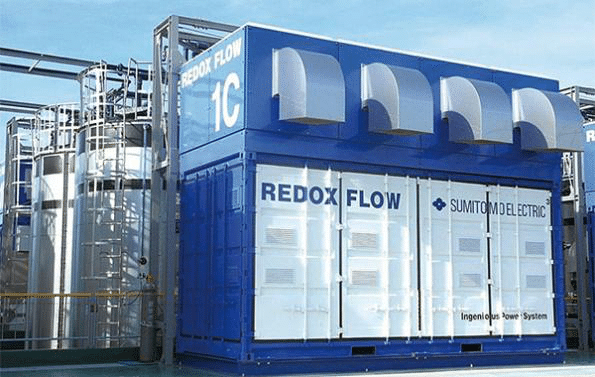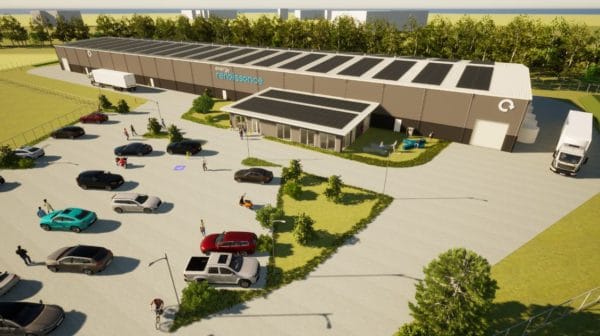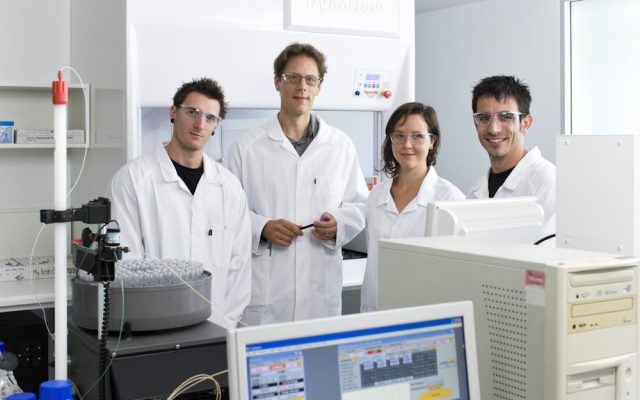About a decade ago, Professor Thomas Nann realised the key to achieving a zero carbon economy was not renewably generating electricity, which was already well on its way to undercutting fossil fuels, but rather energy storage – figuring out how to make these clean electrons dispatchable, able to be summoned on demand.
Professor Nann is today the Head of the School of Mathematical and Physical Sciences at the University of Newcastle but became a chemist in his homeland, Germany.
In April, he launched startup Allegro Energy with two of his former students, Fraser Hughson and Rohan Borah. The startup seeks to commercialise its microemulsion battery electrolyte which, although mostly water by mass, has overcome the voltage limitations that typically hinder water-based solutions.
Battery electrolyte
Electrolyte sits between batteries’ anodes and cathodes, allowing ions to pass between the two conductors. In batteries, electrolytes are usually either water-based or use an organic solvent. Both these forms present their own issues. Organic solvent-based solutions, for instance, tend to have good electrochemical stability but are expensive and potentially toxic. With water-based or aqueous electrolytes, the issue is the solution only remains stable up to 1.23 volts, at which point the water splits into its separate hydrogen and oxygen molecules.
So when Professor Nann began training his attention on battery storage, he came up against precisely these issues which have puzzled researchers for decades. “At some point, I just thought ‘why not do both?’” Professor Nann told pv magazine Australia. That is, why not make an electrolyte with both water and solvent components in the form of a microemulsion. “We were completely blown away at how well it worked.”

Allegro Energy
Microemulsions
Of course, microemulsions aren’t quite as simple as adding dishwashing liquid and oil to water – rather, it’s the combination of water molecules with hydrophobic liquid, coupled with a surfactant which allows the two normally repellent solvents to bond. Basically the combination happens on such a ‘micro’ level it is not able to be split. “It’s thermodynamically stable,” Professor Nann said. “That makes them special and that’s why we can use them in a battery.”
When I asked why the concept had never been applied to battery storage, Professor Nann laughed – “that’s a really good question!”
“Actually when we submitted the patent in the first place, the patent officers came back to us and said ‘well, that’s too trivial’ and we made exactly that argument – why did no one else do that then?” he said. “I think just no one has thought of that.”
The nub of Professor Nann and his co-founders’ discovery is that if you use a microemulsion as a battery electrolyte, you can overcome water’s pesky 1.2 volt barrier. “That’s kind of the secret sauce,” Professor Nann said.
“It’s very unusual – normally when you do research, you fail 99% of the time but that worked straight away,” he addd. “It opened up a whole new world of research.”
The electrolyte’s savings
The beauty of the solution is its simplicity – which makes it extremely cheap, as well as fair easier and less carbon intensive to manufacture.
According to the startup’s modelling, 70% of the price of supercapacitors, which is the first form of energy storage Allegro plans to focus on, comes down to the cost of its electrolyte. “One litre or kilogram of the current electrolyte costs about US$10, ours costs 10 cents,” Professor Nann said.
“So it’s a factor of 100 cheaper.”
The electrolytes currently being used in supercapacitors are also air sensitive, so they require a protective atmosphere in manufacturing. “That’s not necessary with ours… and that’s a huge advantage in manufacturing because it’s way cheaper.”
“We also did some estimates in the carbon footprint of manufacturing our supercaps, and we save about 70% of carbon dioxide just by not having that protective atmosphere,” Professor Nann added.
Allegro Energy’s electrolyte also helps batteries overcome their stubborn paradox of being both a renewable energy enabler and simultaneously extremely toxic and difficult to recycle. Typically the electrolyte is one of batteries’ most hazardous and corrosive elements, but Allegro’s microemulsion electrolyte combination contains nothing “problematic,” making it compatible with long term visions of circular economies.
Use cases: supercapacitors
After Professor Nann discovered the solution, he and his team went about screening different battery types and assessing where it worked best. There were two standouts: supercapacitors and redox flow batteries.
Supercapacitors work similarly to a battery but involve no chemical reaction. Rather the energy is stored and harvested simply by separating charges physically. Which means they work faster, but tend to not store as much energy.
Tesla has begun coupling supercapacitors (which are tiny) with lithium-ion batteries in its cars, using supercapacitors to generate the burst of energy for acceleration, before coasting on lithium-ion.
Eyeing this potential in transport, Professor Nann told pv magazine Australia Allegro Energy will initially focus on the mining industry, which is one of Australia’s biggest emitters. Coming under increasing scrutiny, many of the main companies have started committing to carbon reduction targets, which Professor Nann says will mean nothing short of electrifying all their processes. This, of course, offers huge potential.
Supercapacitors are able to charge and discharge extremely quickly – which has seen them used, for instance, in Newcastle’s tram which charges during the 20 seconds stops it makes on its route. Like trams, trucks and other mining transport follow predicable paths, making the rapidly transforming industry a perfect candidate for Allegro.
Use cases: redox flow batteries
Grid-scale redox flow batteries are another arena Allegro plans to explore, both in terms of coupling with supercapacitors and for integrating with its electrolyte.

Image: TNG
“When you store energy at the grid level, you want something cheap and big and redox flow is perfect for that. But the power you get out of that and the response times are really bad… it takes about a minute or so before the system can respond to demand,” Professor Nann explained.
These slow response times inhibit the battery from responding to rapid power surges and troughs, which is a problem for both grid stability and also trading on the Frequency Control Ancillary Services (FCAS) market, which has proven extremely lucrative for Australia’s big batteries.
“If you now marry [redox flow batteries] with a supercapacitor, it has fantastically fast response times where you can pretty much respond in real time to any demand,” Professor Nann said.
Battery manufacturing barrier
As cheap, easy to produce and non-toxic as Allegro’s electrolyte solution is, the startup is already butting up against a barrier: the complete dearth of battery manufacturing capacity in Australia.
As far as Professor Nann sees it, there’s two solutions. The first and least desirable is to move production overseas. “That’s a last resort,” he said.

Image: Energy Renaissance
“The other strategy we are looking at is to start small and grow organically.” At the moment, the startup is working on ‘lab scale’, “so we are making our supercaps by hand.” Professor Nann’s hope is that the company can ramp up to small-scale production, and continue growing as revenue increases.
Allegro is currently also looking for commercial partners and collaborators, which could potentially also ease some of this production impasse.
Climate Launchpad
Allegro Energy is one of the eight finalists in this year’s Climate Launchpad initiative, run by Climate-KIC Australia, a sister organisation of Europe’s Climate-KIC funded by the European Union.
The program, which Professor Nann quips has helped turn the team of academics to business people, is offering a $50,000 prize to its winner. Money, Professor Nann says, which would help the startup step out of the lab and into manufacturing.
This content is protected by copyright and may not be reused. If you want to cooperate with us and would like to reuse some of our content, please contact: editors@pv-magazine.com.









World-leading tech from an Aussie clean energy startup!
Any businesses looking to explore partnerships or develop use cases with Allegro for either redox flow or Supercapacitor applications can reach out via contact@allegro.energy or http://www.allegro.energy